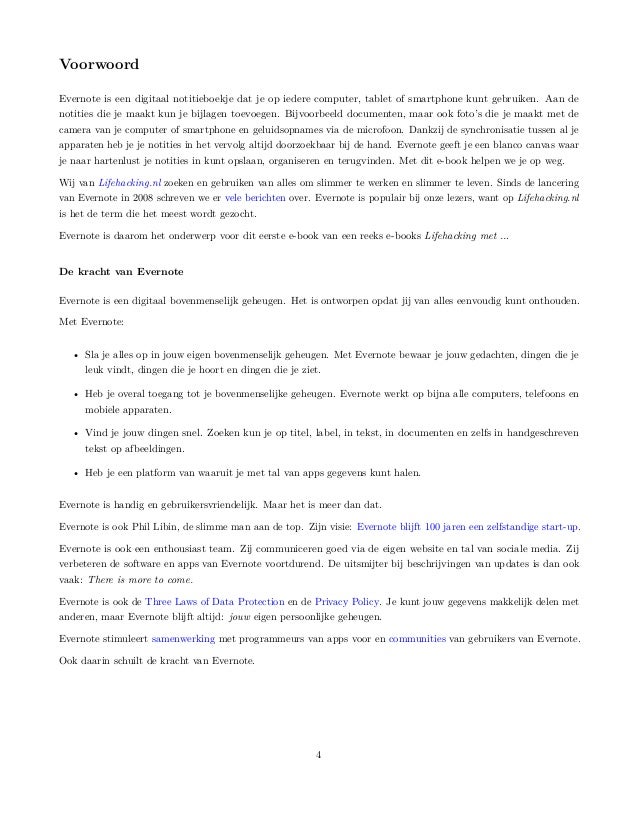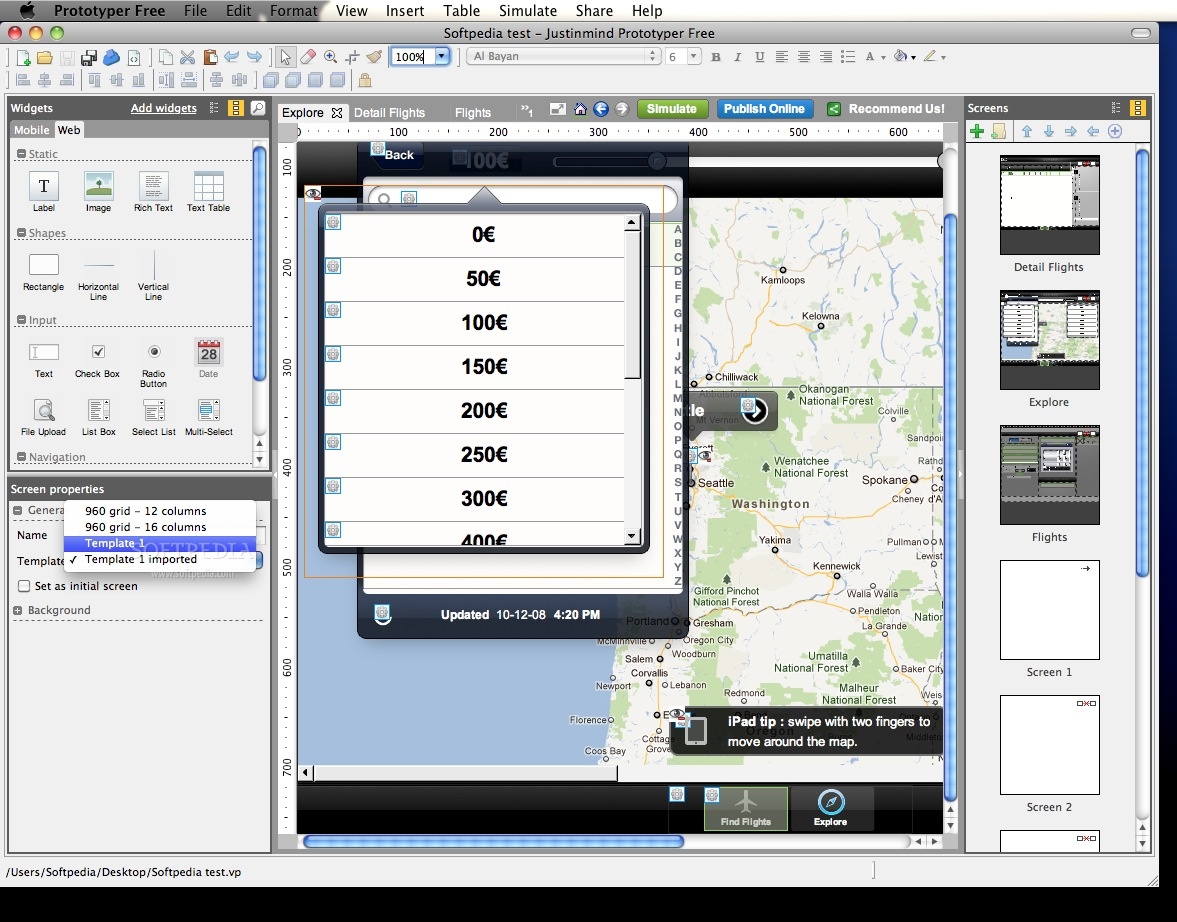Ebook Lifehacking Met Evernote For Mac
I like David. I like ebooks. I like that an ebook can include other forms of media. The stack, no, pile of papers on the corner of my desk waiting to be de-paperized like the topic.' John Chandler 'Paper has finally met its match.' David Woxberg 'The book is a deep dive on paperless workflows for the Mac, iPad, and iPhone. May 15, 2014 you can further makes the images editable. Evernote doesn’t offer scan-to-text functionality (yet), but you can use, for instance, Prizmo, a powerful application for Mac and iOS, which relies on a highly accurate OCR, and can export images to Evernote.
With the new that Evernote is limiting free accounts and hiking prices, it's only natural that some people will be looking for alternatives. Apple's new Notes for iPhone or iPad and Notes for Mac might just make for that alternative. But how to migrate all of those notes? It's easier than you think if you have a Mac running OS X 10.11.4 or higher. Here's how.
How to move all Evernote data to Notes at once using a Mac
You can migrate everything you have saved in Evernote to Notes via your Mac. You'll need to be running OS X 10.11.4 or higher and have Evernote for Mac installed.
- Open Evernote on your Mac.
Sign in to your Evernote account.
- Click on Edit in the Menu bar at the top left of your Mac's screen.
Select Select All from the dropdown menu.
- Select File in the Menu bar at the top left of your Mac's screen.
Click on Export Notes from the dropdown menu.
- Name the file anything you want.
- Select where to save the file. I saved it to my desktop so it can be easily found.
Click Save. It will export as a .enex file.
- Open the Notes app on your Mac.
Click on File in the Menu bar at the top left of your Mac's screen.
- Select Import Notes from the dropdown menu.
Select the .enex file you saved from Evernote.
- Click on Import.
Click on Import Notes when the popup window appears.
Your Evernote files will be saved in iCloud with the folder title 'Imported Notes.'
How to export individual notes from Evernote to Notes on iPhone and iPad
Currently, there is no way to migrate all of your Evernote files into the Notes app on the iPhone or iPad. If you absolutely have no access to a Mac computer with Evernote and the Notes app, you can export full notes (not just links to notes) from the former to the latter, but it is a work around and takes a lot of repeating steps.
- Open Evernote on your iPhone or iPad.
Select a Note.
This will reread the either the.bashprofile file or the.bashrc. Mac sierra gfortran ld library not found for lsystem. To confirm, do the following:.Open a new terminal window using your terminal emulator of choice.
- Tap the More icon in the upper right corner. It looks like three dots.
Tap the Share icon.
- Tap Export Note. This will open a Mail window inside Evernote with a .enex file attached.
- Enter your own email address.
Tap Send in the upper right corner of the mail window.
- Close Evernote.
- Open the Mail app.
- Select the email you just sent yourself from Evernote.
Long-press on the .enex file until the Apple extensions window appears.
- Tap Add to Notes.
Tap Import Notes when the popup window appears.
- Close the Mail app.
- Open the Notes app.
- Tap the new Imported Notes folder. It might be designated with a number if you already have one or more Imported Notes folders.
You have to repeat this process with each note you wish to import from Evernote. It's a lot of steps to repeat over and over, but it is currently the only way to export full notes from Evernote to the Notes app using an iPhone or iPad.
Any questions?
Do you have any questions about how to switch from Evernote to Apple Notes? Let us know.
We may earn a commission for purchases using our links. Learn more.
an interesting turn of eventsBrazil court rules in favor of Apple over iPhone slowing
A court in Brazil has dismissed a case against Apple over the iPhone slowdown controversy as unfounded after authorities determined that Apple had taken appropriate action. Gforce 7600 gs driver for mac.
If you are not familiar with Evernote, now is the time. Evernote is a free web tool and application that helps you to organize your notes, emails, images, and, well…. everything. It’s hard to describe, but this 50-second video highlights some of the key features and abilities.
Evernote can be a great application for teachers, both to keep yourself coordinated and to facilitate student learning. I want to highlight a few ways that I have employed Evernote not only to make my life a little easier as a teacher, but to help my students and my classroom stay more focused and organized.
First, if you need to familiarize yourself with a quick tutorial, try out the “Getting Started Guide For Teachers.” This will help you with the basics of setting up an account, creating notes, and syncing across platforms. Trust me, it’s very easy and you’ll be up and running in just a few minutes. If you are already a more advanced user, then make sure that you set aside some time to browse their blog and YouTube channel for more advanced tips and tricks!
Organizing myself
Teachers have tons of “stuff” on our plates. Most of it is in the form of emails, calendar events, notes, homework, and to-do lists. If you’re like me, you probably have this scattered across more places than you would care to admit. The great thing about Evernote is that you can use it as the repository for all of that “stuff.”

The key to Evernote success is that you set up some basic parameters first. Begin by coming up with some categories — don’t worry about being all inclusive, you can always add more later. I started with a notebook for each class that I taught (above). In these various class-related notebooks I stored links to articles, primary source material, books, and more. I also added notes on my lesson plans. This is a great way to organize all of that additional content that I find on the go, as I scan my personal learning network feeds. I’ve also created notebooks for my side projects (my blog, the clubs I organize, my favorite recipes, you name it).
What’s great about keeping a digital notebook of material is that it’s paperless (more green, less clutter), it’s portable (I have My notes on my cell, computer at home, and computer at work – really, anywhere I can access the internet), and it’s readily searchable! Have you ever misplaced that article you wanted to distribute in a large stack of papers? Not anymore!
Using Evernote with students
Evernote is also a great tool for students to organize all of their own content. I encourage all of my students who bring a smartphone, tablet, or laptop to my class to download the application. They can organize all of their notes and handouts in an Evernote notebook – it’s portable, searchable, indestructible (even if you they lose their phone, their data is safe in the Cloud). In addition to systematizing notes for class, it’s a great tool to use for research activities – students can store images, PDFs, and even hand-written notes (using their device’s digital camera or a free add-on app like Penultimate). Did I mention that hand-written notes are also searchable?!
If a teacher distributes PowerPoints or handouts electronically (I like to do this via PDF — I highlighted my approach in an earlier PLP Voices article about DropBox), these can also be opened and stored in Evernote notebooks. It’s a great way for students to keep all of this material at hand and in one place. When they prepare for a quiz or a test, all of that content is in one location. Likewise, as they prep for a paper or presentation, they have all of their research at their fingertips. Literally. (Evernote can also be a cool collaboration tool — check out the Nerdy Teacher webinar by clicking on the image.)
Another great feature that enhances the student-teacher relationship is that Evernote notebooks are shareable. I like to examine students’ notebooks from time to time (for a grade or just to ensure they are on task). Students with an Evernote notebook simply share it with me. This eliminates the need to collect 85 sloppy, hand-written spirals or three ring binders. Instead, you can access all of their files (whenever you choose) from your computer, tablet, or smartphone. Maximum portability.
Should you go Premium?
While the basics of Evernote are free to all users, there is a premium service that costs $45/year. In all honesty, the basic features meet most users’ needs. I was a basic user for over a year before I upgraded. I found that the more I used it, the more I needed the higher upload rates, faster customer service, and, my favorite feature, searchable PDF documents. The upgrade became worth it. My advice here: play with the service for a while and decide whether or not you need the extra features.
Concluding thoughts
What I really love about Evernote is that it is inherently flexible. I find new ways to use it almost every day. I love it that — other than my initial investment of time — I don’t have to put a lot of thought or energy into organizing the digital pieces of my teaching (or personal) life. The search features make everything so readily accessible (whether or not I remember to put it in the right binder or give it the appropriate “tag”). Best yet, it’s free!
PS: If you’ve already tried Evernote and wondered “What the heck is all the fuss about?!” read this post at the Lifehacker blog with some additional ideas about why you need to try again.
image: compfight/Creative Commons
The following two tabs change content below.- How to Get Hesitant Teachers to Use Educational Technology - August 7, 2019
- Those Terms of Service on Popular Websites DO Matter! - April 22, 2014
- How to Infuse Digital Literacy Throughout the Curriculum - March 26, 2014
